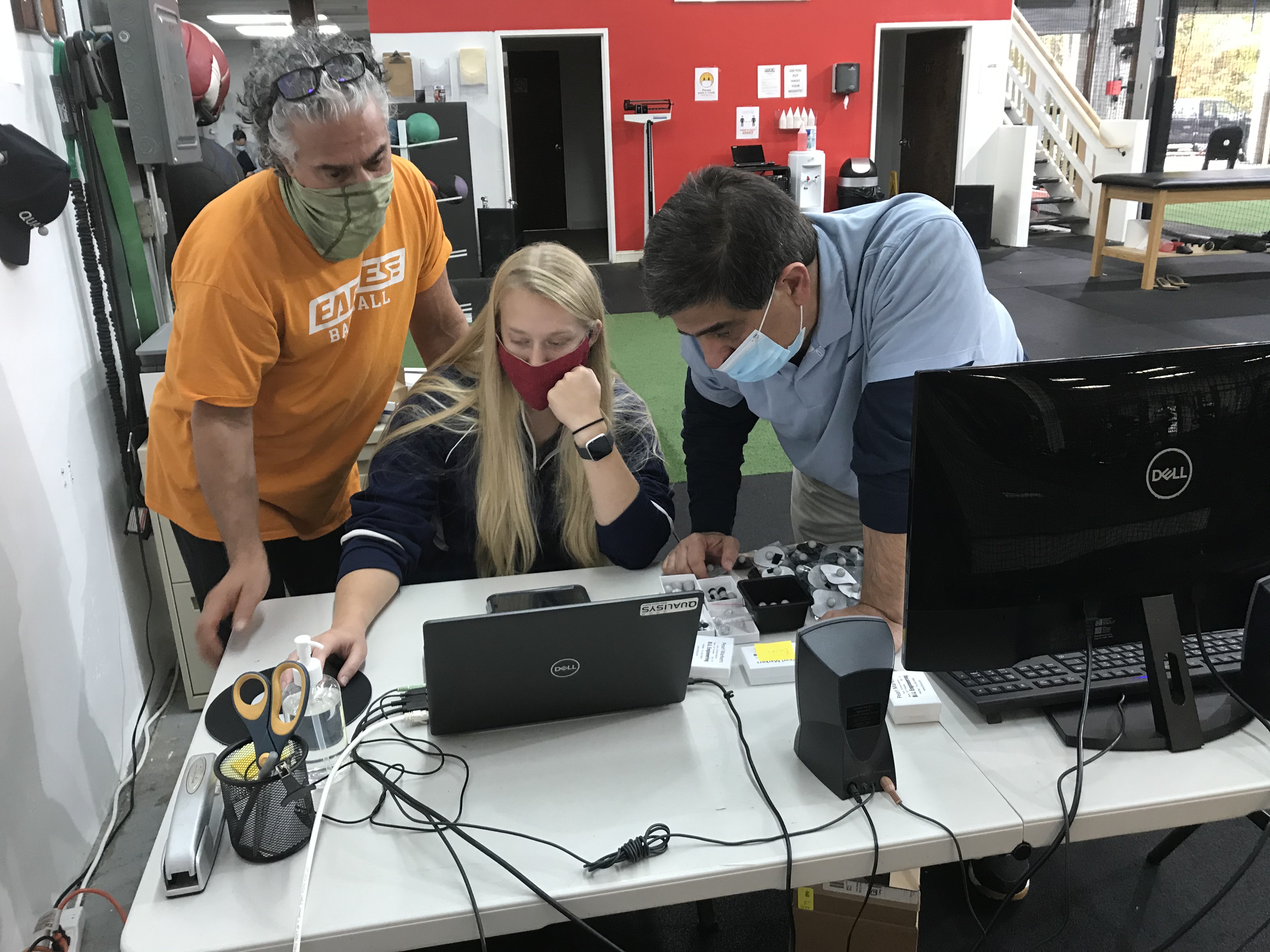Courtney Semkewyc, a biomedical engineering (BME) PhD student, admits that her path to finding her passion in baseball biomechanics was, in a word, “weird.” But, she quickly adds, “what’s great about BME is there’s so much you can do with it. You need to find what you are passionate about and what fits you best.”
As an undergraduate at the University of Rochester, she initially concentrated in cell and tissue engineering, but realized she didn’t like cell labs and wanted a job where she could interact with people. Her master’s work was on traumatic brain injury and she at first planned to focus her SoE doctorate on spinal cord injuries.
“It’s all about finding what’s right for you. My advisors William Craelius and Troy Shinbrot could tell I wasn’t passionate about that project and told me to go find something I would enjoy,” she recalls. “That’s when I came across sports biomechanics.”
Semkewyc, who plans to defend her PhD thesis this fall, recently headed to Tampa, Florida, for at least six months, where she will be a biomechanics assistant intern with the New York Yankees. As a biomechanist, she will collect and analyze player data to determine both physical and mechanical adjustments that can help mitigate players’ risk of injury or enhance their performance. “I’ll work closely with the athletic trainers, medical staff, and coaches to develop individualized plans for each player based on their data,” she explains. ”I get to do research and work with players—so it’s really the perfect combination for me.”
“I’ve always loved baseball and softball,” she confesses. At Rutgers, she gained vital hands-on experience as an intern for 11 months with Rockland Peak Performance (RPP), a baseball training facility where she collected data for her doctoral project.
As a people person, Semkewyc especially enjoyed working with the coaches and players at RPP. ”I loved being able to talk through things with them and learn from their different perspectives. By helping me to understand the training process and an individual’s mindset I’m able to better understand and communicate concepts and directions.”
 According to Semkewyc, biomechanics is a growing field offering expanded career opportunities, as Major League Baseball (MLB) and other sports teams are establishing biomechanics departments and colleges and hospitals are opening biomechanics labs. She views her internship with the Yankees as an exciting learning experience that could help her land a job with an MLB team in the future.
According to Semkewyc, biomechanics is a growing field offering expanded career opportunities, as Major League Baseball (MLB) and other sports teams are establishing biomechanics departments and colleges and hospitals are opening biomechanics labs. She views her internship with the Yankees as an exciting learning experience that could help her land a job with an MLB team in the future.
She says, “I’m most looking forward to growing as a biomechanist and absorbing as much information as possible. This is such a great opportunity not only to learn new technology, but also to learn from experienced biomechanists who know how to apply their knowledge to baseball and help their players progress.”
While a baseball biomechanic like Semkewyc relies on technologies such as motion capture and inertial sensors to generate data that is analyzed through various programs to learn see how individual athletes can reduce their risk of injury and improve their performance, her prescription for non-athletes is straightforward.
“The easiest thing for non-athletes to do to avoid injuries is to stretch,” she advises. “Many injuries come from people either being too tight or losing their range of motion. Stretching can help to combat these problems, but can also help manage stress and improve posture.”



